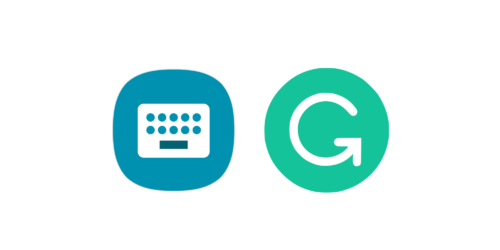
Using GenAI as a Learning Partner in Class
By Dorina Grossu

I teach in the Quality Assurance and Manufacturing Management program in the School of Engineering and Technology. The Quality Core I and II courses have curricula designed to meet the requirements of the New Product Introduction in the Automotive Industry Action Group (AIAG).
Generative AI (GenAI) has many applications in the manufacturing (specifically automotive) field, including research and development, software development, product classifications and regulations, smart manufacturing maintenance, and supply chain (McKinsey & Company, 2023). GenAI can also extract data and complete other repetitive tasks to create personalized designs and new content to improve efficiency and quality while meeting industry standards and customer requirements.
Given that different applications are continuously developed, students benefit from learning to use genAI to innovate and create. How do we help students to become more efficient and effective users of generative AI for this work?
Goals for Using GenAI in the Classroom
My goal is to use generative AI in the classroom as an active learning activity to promote critical thinking and problem-solving. As a college educator, I believe that lifelong learning requires evolving skills. My role is to provide a learning environment that helps students gain skills and knowledge for the current and future work environment. I also aim to provide active learning experiences where students can get instant feedback.
The 3 P model (Presage-Process-Product) of teaching, developed by John Biggs (2011), is a framework I use to understand and improve the teaching and learning process. Presage refers to the initial conditions before learning begins, including students’ characteristics and the teaching context. Process involves the learning and formative feedback activities that students engage in during the learning experience. Product represents the learning outcomes, such as knowledge gained, skills developed, and overall academic performance. Students use genAI as a partner in the process of learning.
Using GenAI as a Learning Partner in the Classroom
Following the 3P model, I create examples and questions for my class lessons that students ask and answer with genAI to help them build skills in comprehension, research, and analysis (University of Oxford, 2023). Here is a general summary of the steps I follow:
- At the beginning of each semester, I talk about my teaching approach, which encourages the use of genAI but also highlights its limitations as well. (Presage)
- Each class starts with a brief review of what was completed the previous week and a discussion that prepares them for the next topic. (Presage)
- During the class lesson, I ask students challenging questions and encourage them to search for answers using genAI. Students are asked to report and vote on their findings using a Mentimeter poll (see Figure 1). (Process)

- I encourage each student to ask GenAI more questions based on the answers, inviting students to tailor the questions to what each student needs to know and wants to know more about. Students can read the answers during the class, engage in conversations, and generate more ideas if they think that the answers offered by genAI are not sufficient or accurate. Once again, students report what they find after exploring further questions with genAI. (Process)
- Together as a class, we review the reporting and voting on Mentimeter, noting where we can see similarities and differences in answers to our queries. We cross-check previous knowledge and understanding. Reflection on using genAI as a class also helps students deepen their understanding of the answers provided by genAI. (Product)
- I remind students that genAI is used for learning only: they cannot use GenAI in the quizzes, assignments, and exams. (Product)
To promote academic integrity and to ensure I can assess their learning, I use GenAI only as an in-class personalized learning tool: our in-class exams use Lockdown Browser on and without access to any resources. All the expectations are communicated so students understand that their own cognitive efforts to demonstrate their learning are required.
Effects of Using GenAI in the Classroom
Since integrating genAI into my class activities, I have observed increased participation because students engage with the material in question-based conversations with their “learning partner.” It also reduces hesitation and increases student confidence: students can ask and make mistakes when using genAI without pressure or fear of judgment from their colleagues. Based on our debriefs, I find that genAI can help students enhance their knowledge of certain topics and skills to complete those tasks, such as developing a new gauge in a measurement system.
Using genAI in classroom learning creates a personalized learning experience in which students actively engage in question-asking and answering with genAI as a learning partner. As I walk around in the classroom, monitoring students as they ask and answer questions using genAI, I see the different answers that students receive, which opens further in-class discussions about the strengths and limitations of genAI as a tool for learning and industry work.
In the future, I would like to explore using genAI to create personalized learning plans for students since my courses have significant differences in students’ knowledge and backgrounds. Each student could create their personalized learning plan and share it with me and other members of the class. I am also interested in exploring interactive genAI simulations with real-world scenario examples.
Ideas for Faculty and Future Uses
Here are some thoughts I have for faculty who are considering using genAI in the classroom as an active learning tool:
- The questions you invite students to ask GenAI should always be aligned with the learning objectives and support the course goals.
- Set clear boundaries from the beginning on when it can be used in the classroom and what is the purpose of active learning, critical thinking, and in-class participation is a must.
- Have students work in groups: fostering collaboration gives students a more balanced approach to personalized learning.
- Highlight for students that there are limitations when using genAI and that they need to be critical to be ethically responsible.
References
Biggs, J. B. (2011). Teaching for quality learning at university: What the student does. McGraw-Hill Education (UK).
McKinsey & Company. (2023). The economic potential of generative AI: The next productivity frontier. Retrieved from https://www.mckinsey.com/capabilities/mckinsey-digital/our-insights/the-economic-potential-of-generative-ai-the-next-productivity-frontier#key-insights
University of Oxford. (2023). AI tools in teaching. Retrieved from https://www.ctl.ox.ac.uk/ai-tools-in-teaching
About the Author
Dorina is passionate about integrating EdTech and, AI, ML into tech-centred and student-centred learning. Her dedication to education led her organization, BITSPEC, to become a member of the UNESCO MIL Alliance. Prior to academia, she held roles as Program Manager and Quality Assurance Manager in the automotive and healthcare sectors.






